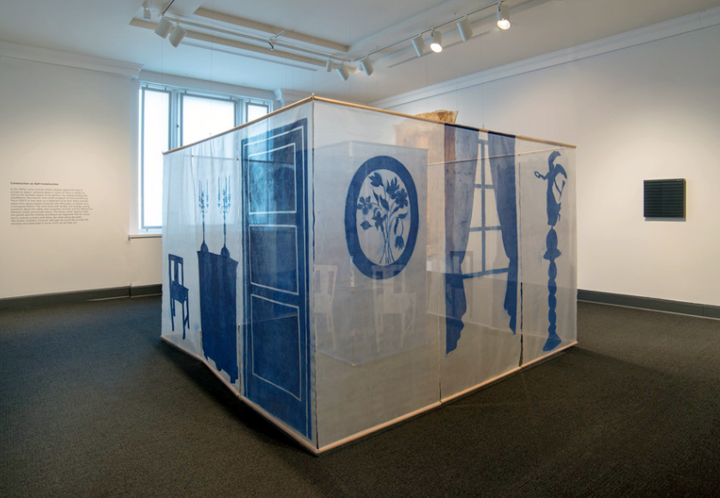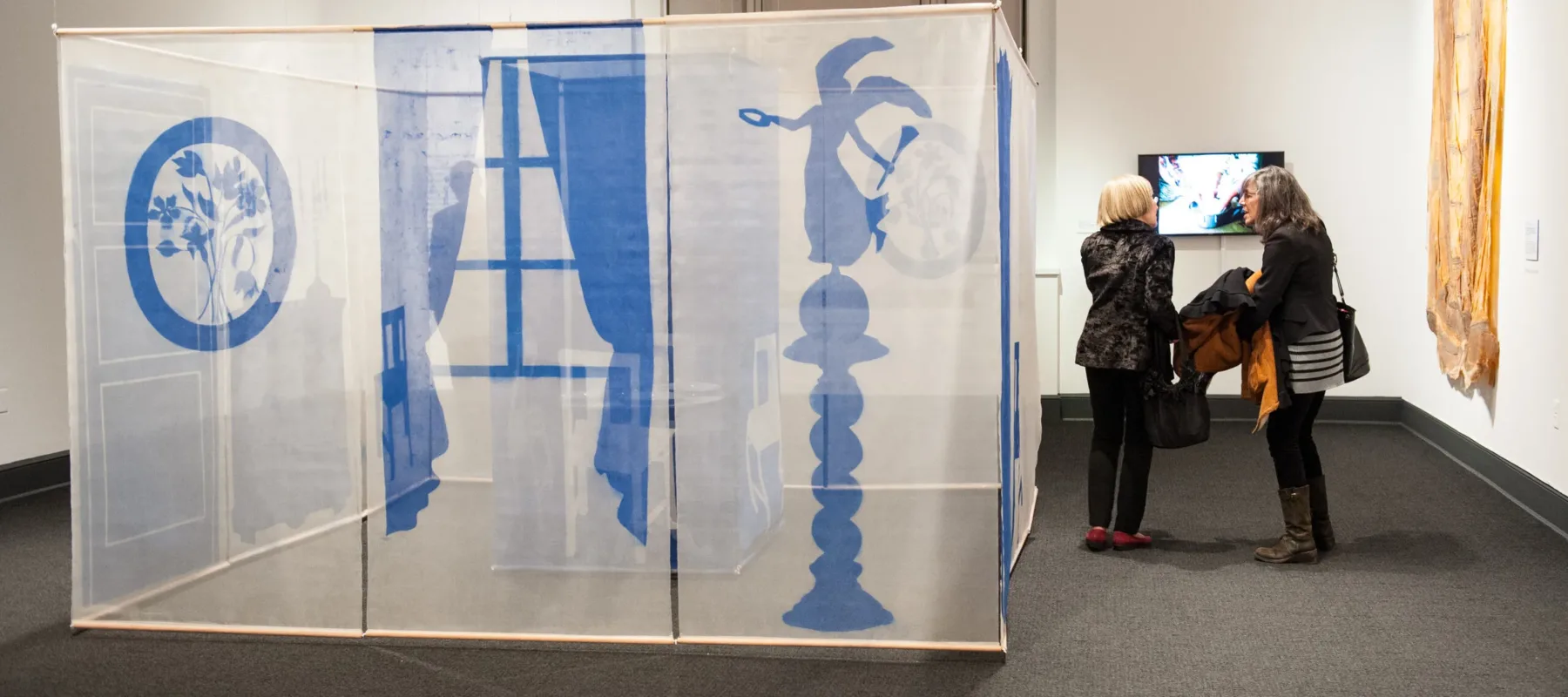Questions about a woman’s “place” resonate in our culture, and conventional ideas about the house as a feminine space persist. Global artists in Women House recast conventional ideas about the home through provocative photographs, videos, sculptures, and room-like installations. Ana Vieira’s room-sized sculpture raises questions about the safety and certainties of home and the differences between public and private space.
Ana Vieira’s Ambiente/Sala de Jantar (Environment/Dining Room), 1971
In the 1970s, some women artists rebelled against the lack of access to space—physical space in which to work or exhibit as well as the symbolic space of recognition—by making building-like installations.
Ana Vieira’s (b. 1940, Coimbra, Portugal; d. 2016, Lisbon) room-sized sculpture Environment/Dining Room (1971) is now seen as a statement of its time. “The ‘Environment’ of 1971 was the beginning of my work on three-dimensional painting, which was also another obsession of mine,” said Vieira. “I did not want there to be only a (two-dimensional) image but the body of the image, visible through the body of the spectators, because you do not see only with your eyes but also with your entire body.”

Vieira built the space from gauze panels screened with silhouettes of objects from a bourgeois interior. The work feels both familiar and strange, raising questions about the safety and certainties of home and the differences between public and private space. The barely visible objects inside the panels and the clinking soundtrack are fragments that the viewer has to actively connect and follow, like clues being decoded. Viewers remain outsiders. Although people would like to enter the structure and participate to know more, they are kept out.
Visit the museum and explore Women House, on view through May 28, 2018.
